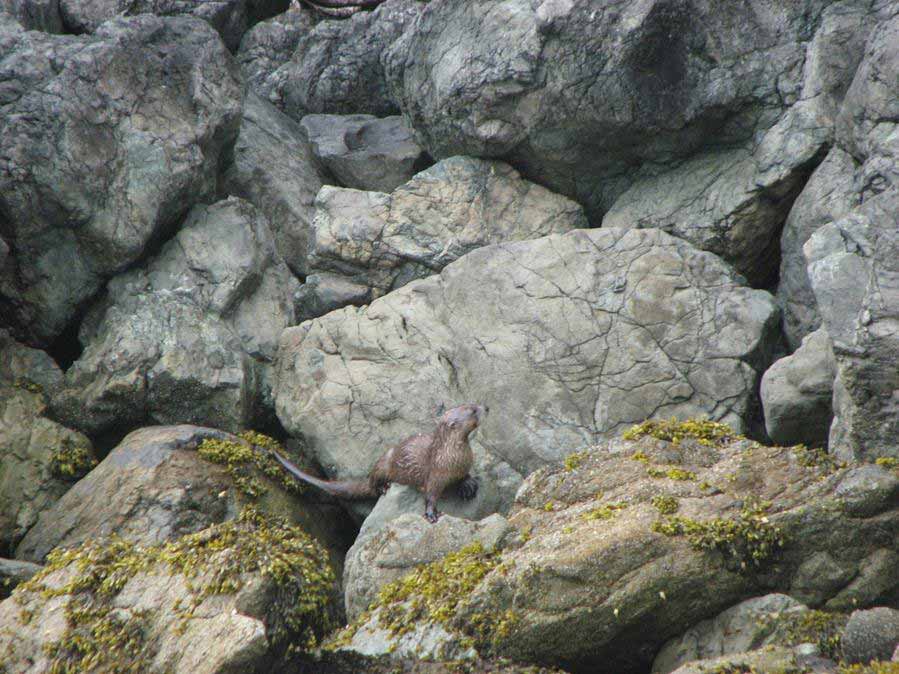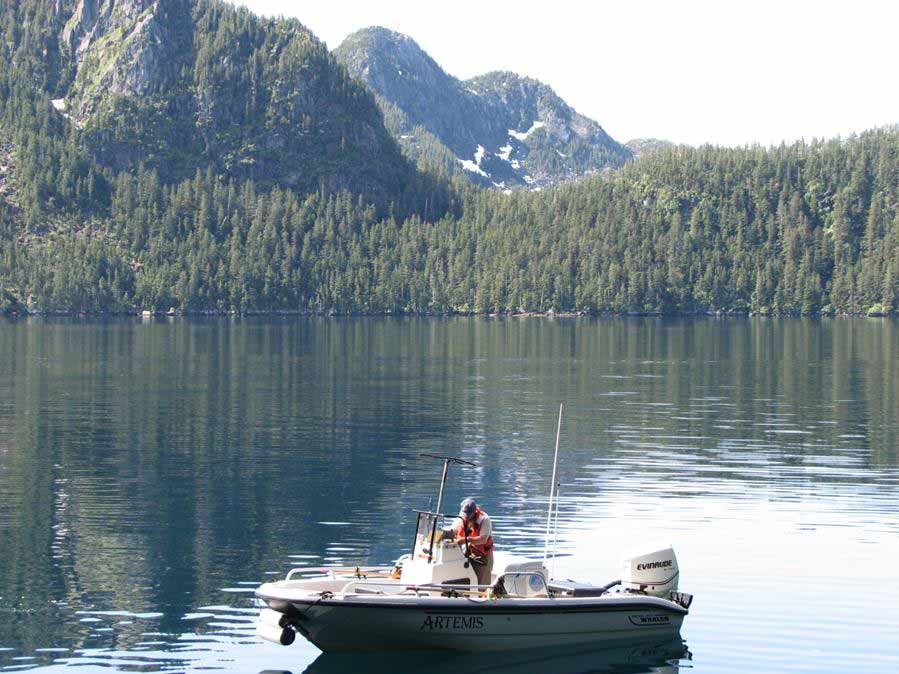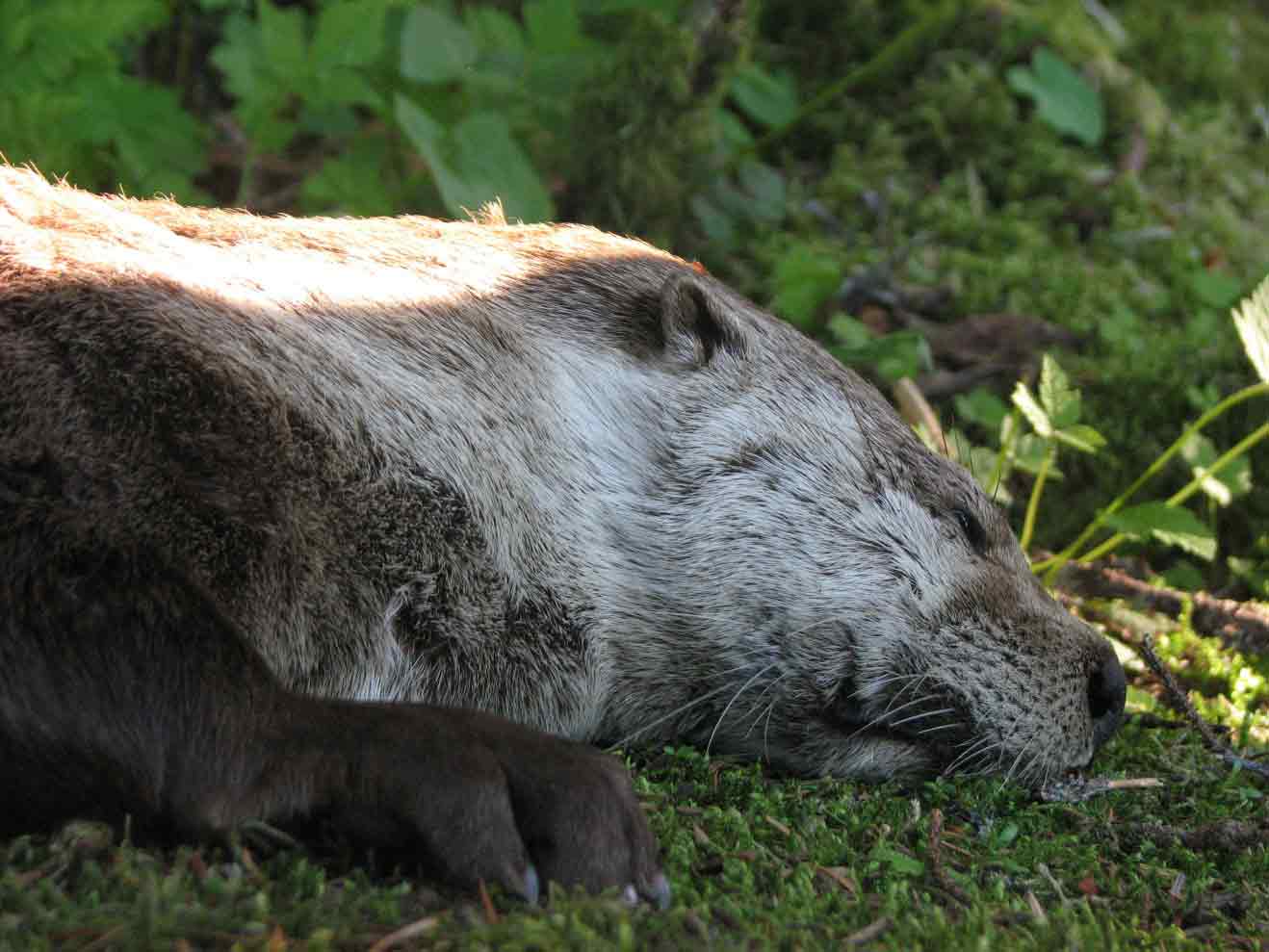It's 6 AM on one of our last days of field work in Kenai Fjords National Park. We grab a cup of coffee and leave the M/V Alexandra for a telemetry run in Three Hole Bay. The sea is mirror flat. After our brief skiff ride, we stop at the mouth of the bay and listen to the beeping sounds of the transmitters attached to our traps. We're hoping to hear quick pulses that indicate a target in one of our traps; not this morning. So it goes when you are tracking a moving target: coastal river otters.

A coastal river otter examining the rocks leading to a latrine site. Photo: NPS/Adi Barocas, 2012.
Working in small, open skiffs, we spent 12 days in Aialik Bay working on a river otter population survey. River otters are a key link between land and sea. By preying on fish in the ocean and using terrestrial sites to defecate, these predators have a significant role in transporting nutrients from sea to land. Therefore, we collected fecal samples from latrine sites.

Working from the research vessel, Artemis. Photo: NPS/Adi Barocas, 2012.
Latrines are also sites strategically used by river otters for social communication. To further investigate the social interactions among these animals, we placed advanced tracking systems onto otter backs; live-capture was necessary. To install the tracking systems we used soft-catch foothold traps. These traps maximize capture potential while minimizing animal injuries. Eight adult river otters were captured; each was sedated and treated skillfully by an experienced team of biologists from the University of Wyoming and the Alaska Department of Fish and Game. In addition to the attachment of the tracking units, we collected blood samples, which provide information on physical condition, health, and DNA for genetic analysis. Once our work was complete, otters recovered in open wooden boxes from which they were able to self-release once the effects of the sedatives passed. Traps were constantly revisited, including early morning and late night trips, to make sure captured animals spent a minimal amount of time in them.

A sedated river otter ready to be fit with a proximity tracking unit at a capture site in Aialik Bay. Photo: NPS/Adi Barocas, 2012.
As part of a long ongoing collaboration, we have been closely following river otter populations throughout coastal Alaska. Previous work by our research team indicates that river otter sociality is strongly influenced by the availability of schooling fish. Therefore, the assessment of social bonds between animals can provide us with information on processes at the ecosystem level that affect a multitude of other species in Alaska coastal areas. We hope that our research will add to the limited knowledge of how this complex natural system copes with the environmental shifts associated with climatic change.
